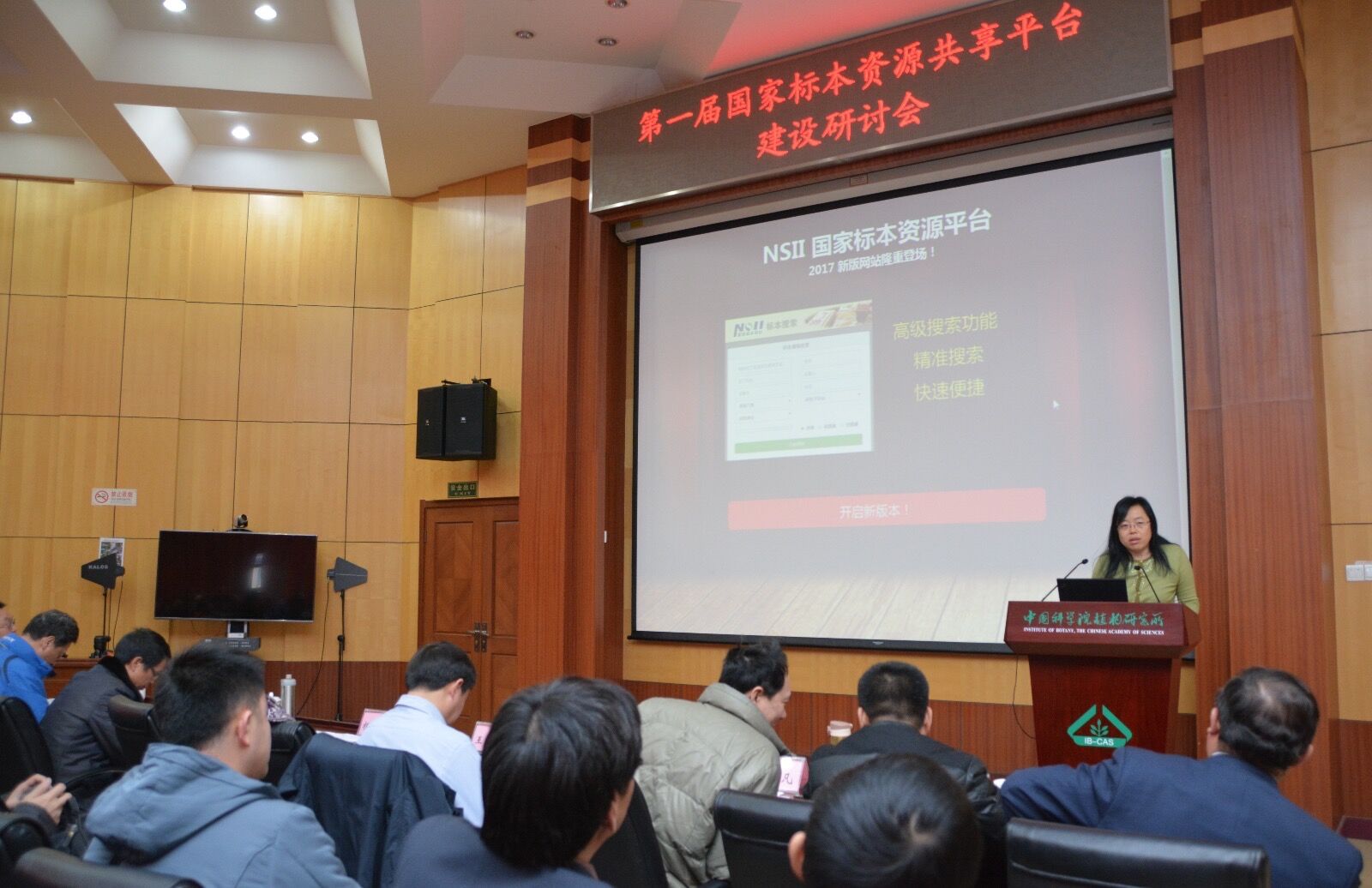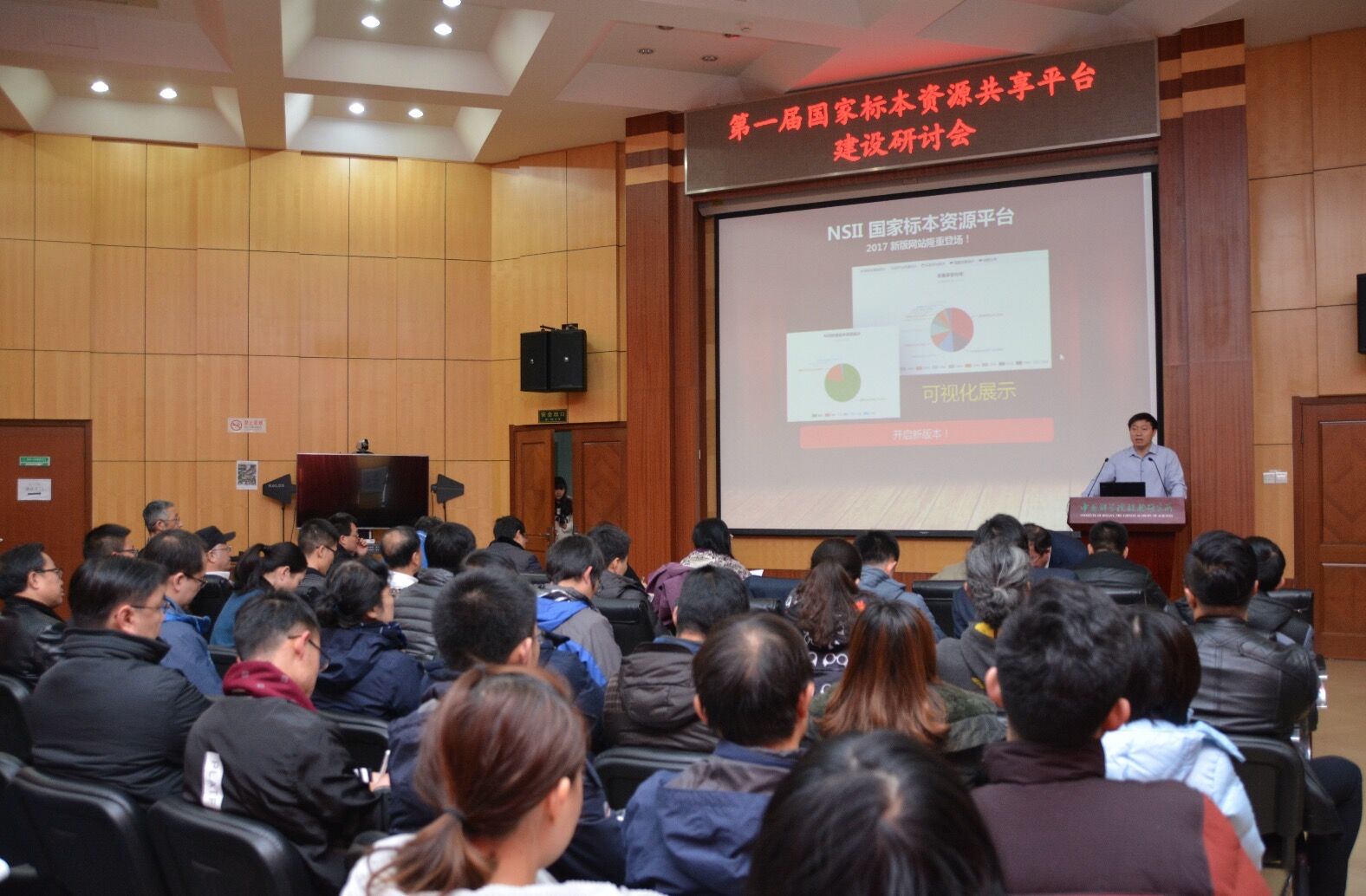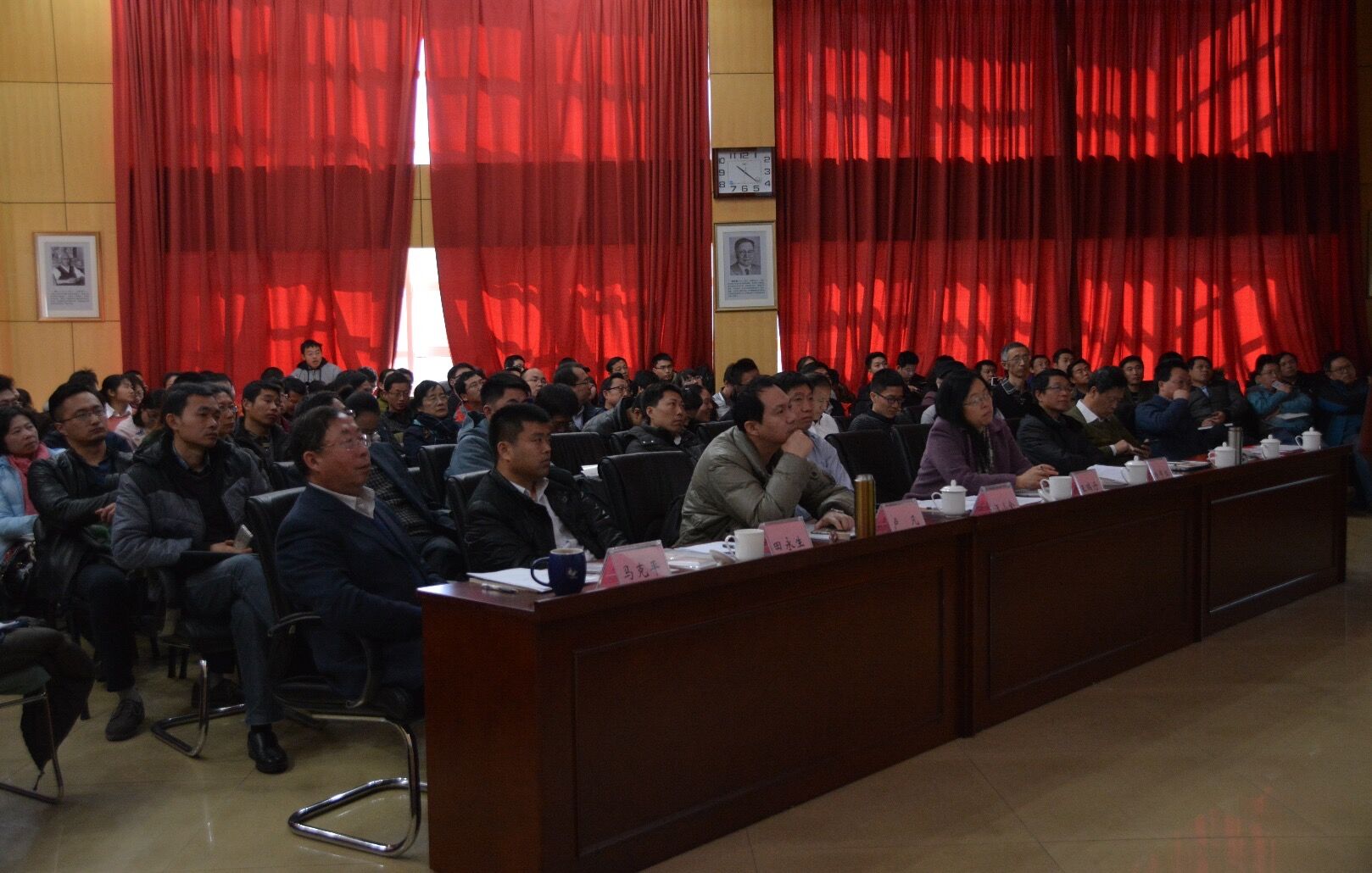In February 23 - 24, for two days of the first national specimen resource sharing platform construction seminar held in the Institute of Botany, Chinese Academy of Sciences. The meeting was organized by the Institute of Botany, Chinese Academy of Sciences, sponsored by the national specimen resources sharing platform office. Ruidan Wang, The deputy director and Fan Lu the head of First Division of Profissional Work from National Science and Technology Infrastructure Center, Ministry of Science and Technology, the deputy director Yongsheng Tian from Science and Technology for Development Bureau, Chinese Academy of Sciences, Xiaoquan Wang, the Deputy Director (presided over the work) and Xiuhong Yang, the head of Division of Research Governance Office from Institute of Botany, Chinese Academy of Sciences invited attended the opening ceremony.
The deputy director Ruidan Wang from the Ministry of Science and Technology on behalf of the National Science and Technology Infrastructure centre made a speech, affirmed the achievements of the National Specimen Information Infrastructure has made, introduced the new ideas for National Science and Technology Infrastructure carrying out hierarchical dynamic management and open development for the platform; the deputy director Yongsheng Tian reviewed the development of specimens resources digitization in China, emphasizing the significance of specimens digitization on scientific development and national strategy. Xiaoquan Wang stressed that the specimens is the credentials and resources for study, the specimen records information for environmental climate change, specimens digitization formed specimen large data after sharing. Specimens’ collection, preservation and sharing are a big science and technology project, not only provide services for the contemporary scientific research and technical personnel, and even a very important treasure we left for the future generations. We hope that all of you will work together to develop the specimens digitization project with higher efficiency. Xiaoquan Wang launch a new website of the national specimen Information Infrastructure, the URL is http://www.nsii.org.cn. More than 190 persons, the 88 research institutes, institutions of higher learning, museums, and herbarium attended the meeting. The meeting was chaired by the researcher Keping Ma of the national specimen information infrastructure leader.
The researcher Keping Ma made a report for progress of the specimens digitization and construction of national specimen information infrastructure, the researcher Haining Qin, Jun Chen, Diqiang Li, the professor Xingjin He, Mingyue He, the senior engineer Jie Zhang made the report for the current platform situation and development of plant specimens, animal specimens, teaching specimens, nature reserves specimens, mineral rock and fossil specimens and polar specimens, respectively.
The workshop was divided into two topics, three parallel sessions, a total of 29 speakers introduced specimens digitization of the biology and geography, and the latest developments of the related technical methods, showing their thinking and contribution for specimens’ digitization achievement and their application.
In order to encourage more units to participate in the process of specimens digitization in China, the seminar arranged a morning time, discussed the problems encountered in the digital process and the future development direction by group. This session, the three parallel sessions had a warm atmosphere, the participants made a lot of specific comments and targeted recommendations.
In the inter-work conference, the leader of sub-platform of plants, animals, nature reserves, teaching, rock and polar specimens, respectively, introduced the development ideas and priorities, 13 experts express their views, put forward constructive comments and suggestions, for instance, each sub-platform should made development goals and planning in the long term, improve the user experience of the website, improving data quality while ensuring data increments.
Finally, the researcher Keping Ma made five suggestions: First, proposed six sub-platforms to make a slightly long-term planning, to understand what the development goals, how to plan, how to achieve? Second, make clear the nature of the platform. The researcher Keping Ma says that profitability is not the target of the specimen information infrastructure. The role of the specimens’ information infrastructure is to promote scientific development, scientific research, teaching and science are the emphasis, but the core is taxonomy and geography. Third, consider the integrity of the data. Not only give attention to the specimens, checklist, literature and color photos are equally important, to ensure the integrity of the data; fourth, establish the concept of resources sharing. Sub-platform is only an organization style, not a barrier to resource sharing. Inter-platforms should strengthen communication, including technology sharing, work together to promote the resources sharing; Fifth, the openness of project management. Actively attract more people to participate in the project, and to establish a multi win platform development model.
The seminar achieved its desired results.

The Deputy Director from the Ministry of Science and Technology Ruidan Wang

The Deputy Director from the Institute of Botany Xiaoquan Wang

The conference site
In February 23 - 24, for two days of the first national specimen resource sharing platform construction seminar held in the Institute of Botany, Chinese Academy of Sciences. The meeting was organized by the Institute of Botany, Chinese Academy of Sciences, sponsored by the national specimen resources sharing platform office. Ruidan Wang, The deputy director and Fan Lu the head of First Division of Profissional Work from National Science and Technology Infrastructure Center, Ministry of Science and Technology, the deputy director Yongsheng Tian from Science and Technology for Development Bureau, Chinese Academy of Sciences, Xiaoquan Wang, the Deputy Director (presided over the work) and Xiuhong Yang, the head of Division of Research Governance Office from Institute of Botany, Chinese Academy of Sciences invited attended the opening ceremony.
The deputy director Ruidan Wang from the Ministry of Science and Technology on behalf of the National Science and Technology Infrastructure centre made a speech, affirmed the achievements of the National Specimen Information Infrastructure has made, introduced the new ideas for National Science and Technology Infrastructure carrying out hierarchical dynamic management and open development for the platform; the deputy director Yongsheng Tian reviewed the development of specimens resources digitization in China, emphasizing the significance of specimens digitization on scientific development and national strategy. Xiaoquan Wang stressed that the specimens is the credentials and resources for study, the specimen records information for environmental climate change, specimens digitization formed specimen large data after sharing. Specimens’ collection, preservation and sharing are a big science and technology project, not only provide services for the contemporary scientific research and technical personnel, and even a very important treasure we left for the future generations. We hope that all of you will work together to develop the specimens digitization project with higher efficiency. Xiaoquan Wang launch a new website of the national specimen Information Infrastructure, the URL is http://www.nsii.org.cn. More than 190 persons, the 88 research institutes, institutions of higher learning, museums, and herbarium attended the meeting. The meeting was chaired by the researcher Keping Ma of the national specimen information infrastructure leader.
The researcher Keping Ma made a report for progress of the specimens digitization and construction of national specimen information infrastructure, the researcher Haining Qin, Jun Chen, Diqiang Li, the professor Xingjin He, Mingyue He, the senior engineer Jie Zhang made the report for the current platform situation and development of plant specimens, animal specimens, teaching specimens, nature reserves specimens, mineral rock and fossil specimens and polar specimens, respectively.
The workshop was divided into two topics, three parallel sessions, a total of 29 speakers introduced specimens digitization of the biology and geography, and the latest developments of the related technical methods, showing their thinking and contribution for specimens’ digitization achievement and their application.
In order to encourage more units to participate in the process of specimens digitization in China, the seminar arranged a morning time, discussed the problems encountered in the digital process and the future development direction by group. This session, the three parallel sessions had a warm atmosphere, the participants made a lot of specific comments and targeted recommendations.
In the inter-work conference, the leader of sub-platform of plants, animals, nature reserves, teaching, rock and polar specimens, respectively, introduced the development ideas and priorities, 13 experts express their views, put forward constructive comments and suggestions, for instance, each sub-platform should made development goals and planning in the long term, improve the user experience of the website, improving data quality while ensuring data increments.
Finally, the researcher Keping Ma made five suggestions: First, proposed six sub-platforms to make a slightly long-term planning, to understand what the development goals, how to plan, how to achieve? Second, make clear the nature of the platform. The researcher Keping Ma says that profitability is not the target of the specimen information infrastructure. The role of the specimens’ information infrastructure is to promote scientific development, scientific research, teaching and science are the emphasis, but the core is taxonomy and geography. Third, consider the integrity of the data. Not only give attention to the specimens, checklist, literature and color photos are equally important, to ensure the integrity of the data; fourth, establish the concept of resources sharing. Sub-platform is only an organization style, not a barrier to resource sharing. Inter-platforms should strengthen communication, including technology sharing, work together to promote the resources sharing; Fifth, the openness of project management. Actively attract more people to participate in the project, and to establish a multi win platform development model.
The seminar achieved its desired results.

The Deputy Director from the Ministry of Science and Technology Ruidan Wang

The Deputy Director from the Institute of Botany Xiaoquan Wang

The conference site
